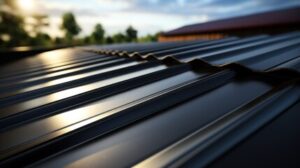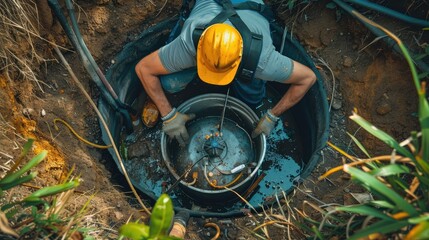Metal roofs offer homeowners a variety of benefits. They have long lifespans, are energy efficient and can be recycled.
Regularly sweep off your metal roof to remove loose debris and dirt. This helps prevent premature degradation and staining. Contact Tulsa Company for professional help.
Check for debris that collects in valleys, low points and any other areas with low slopes. Make sure these areas are cleaned regularly, especially if your home is surrounded by trees.
Metal roofing has a long lifespan that reduces the need for frequent replacements, which saves property managers money. Its durability also contributes to sustainability by lowering energy costs and minimizing waste from discarded materials.
A metal roof can withstand severe weather conditions that can damage other types of roofing. Metal roofing can stand up to high winds, pounding hail, heavy snow, and even wildfires. Metal roofs are also more resistant to fire and will not burn like shingles or asphalt.
The longevity of metal roofs depends on the quality of the materials and whether they have been installed correctly. The thickness of the metal, which is referred to as its gauge, is another factor that impacts durability. Higher gauge metals are more durable, but can also be more expensive.
Different metal roofing materials offer varying lifespans, with copper and zinc typically lasting the longest followed by aluminum. The local environment can also impact the longevity of a metal roof with coastal salt air, heavy industrial pollution, and frequent severe weather events accelerating wear and corrosion.
While the durability of metal is impressive, it is important to keep in mind that no matter what type of roof you choose, any roofing system will eventually rust if exposed to the elements for prolonged periods of time. A properly designed and maintained metal roof will be protected from rusting through the application of protective coatings.
In addition to coatings, the specific design of a metal roof is crucial to maximizing durability. For example, standing seam metal roofing has raised panels that snap together to create a concealed fastener system that helps to limit water leaks. This type of metal roof is also able to accommodate natural expansion and contraction caused by dramatic changes in temperature without compromising its waterproofing.
The general aesthetic of metal roofs is versatile and can be made to look effortlessly modern or to evoke traditional charms. A variety of colors are available to meet the unique needs and style preferences of each property owner. Metal roofs are also not susceptible to moss, which can damage other types of roofing and may require costly repairs or replacements.
Aesthetics
A metal roof’s unique appearance elevates a property’s aesthetic, making it a desirable option for a range of design visions. Whether homeowners want to create a modern, sleek appearance or evoke rustic charm, metal roofing offers a wide array of color options that seamlessly complement a home’s exterior. Additionally, incorporating textures into a metal roofing system adds dimension and depth to a structure, further elevating its curb appeal.
When paired with the right siding and landscaping, metal roofs can offer a sophisticated contrast to more traditional architectural styles. Moreover, the long-term appearance of a metal roof is remarkably stable, maintaining its aesthetics far longer than other roofing materials.
Color options for a metal roof are plentiful and span a broad spectrum, from subtle neutrals to vibrant hues. Matte black and charcoal roofs pair beautifully with a variety of siding colors, while bright shades like Brite Red and Harbor Blue can add visual interest to any home. Other considerations for choosing a metal roof color include the architectural style of a building, its surroundings, and local climate conditions. For example, lighter colors reflect the sun’s rays and can improve energy efficiency in hot climates, while darker shades absorb heat and may be more effective in colder environments.
Beyond color, metal roofing panels are available in a number of textures that add depth to a structure. Textured finishes accentuate the modern aesthetic of a metal roof while also reducing glare and enhancing a home’s energy efficiency. Smooth textures, on the other hand, create a classic, refined look that works well with a variety of architectural styles.
Ultimately, the aesthetic choices made at installation are sure to impact the overall appearance of a metal roof for decades afterward. However, by collaborating with expert contractors in Pittsburgh to choose the perfect aesthetic for a metal roof, architects and homeowners can unlock its full potential.
The beauty and durability of metal roofing make it a premier choice for modern and historic buildings alike. Historical buildings often embody unique design elements and craftsmanship that must be preserved, while also requiring a balance of contemporary functionality and historical accuracy. When installing a metal roof on a historical building, a thorough assessment must be conducted to ensure the appropriate roof type is selected.
Energy Efficiency
Metal roofing is one of the most energy efficient options available. Its reflective nature helps to prevent up to 70% of solar heat from absorbing into the roof, which can significantly cut down on cooling costs. This can also help reduce the overall demand on an air conditioning system, leading to additional savings in utility expenses and a reduced impact on the environment.
In addition to being highly recyclable, metal also has a higher thermal emittance rating than asphalt shingles. This means that it can effectively transfer and emit the heat from the sun into the interior of the building or home, helping to further reduce energy costs.
Additionally, metal can be used to replace a traditional asphalt shingle roof, reducing the amount of waste that ends up in landfills. It is also a much lighter material than tile or heavy shingles, allowing it to be installed over an existing roof, further minimizing the need for disposal and saving energy resources during installation.
Lastly, metal roofing can last up to 50 years or more without needing to be replaced, eliminating the need for constant waste production. The longevity of this roofing option, combined with its energy efficiency and beauty, makes it a smart and environmentally friendly choice for any property.
Color is an important factor in the durability and aesthetics of a metal roof, and homeowners often find themselves choosing colors like black, charcoal gray, or bronze that will blend well with any home design. These timeless colors will still look appealing decades from now, and will not need frequent touch-ups or repairs to maintain their beauty.
Choosing the right gauge (thickness) of metal is also an important consideration when looking at your metal roofing budget. Lower gauge metals are more expensive than thicker materials, but the difference in cost is not nearly as drastic as you might think. It is a good idea to consult a professional to ensure that you get the best possible value for your money when installing a new metal roof. This will help to avoid any unexpected costs that may arise during the project.
Maintenance
Metal roofing is designed to be durable and long-lasting, but just like any roof system it requires routine care to maintain its integrity. Most importantly, regular inspections should be performed to look for damage such as dents, scratches or loose panels. If these are spotted early on they can be addressed easily and inexpensively.
In addition, it’s important to regularly clean your metal roof to remove outdoor debris such as leaves and branches. This can help prevent moisture buildup, which may lead to rust. Rust can be treated with a metal roof rust inhibitor and coatings specific to metal roofing to extend the life of your roof.
Another important maintenance item is to reseal any exposed fasteners on your roof. Many types of metal roofs are made with concealed fasteners, which means the screws that hold the panels on the roof are covered. However, some roofs are built with exposed fasteners and can be more susceptible to leaking or corrosion over time. These should be inspected and any that are found to have loosened should be tightened or replaced.
It is also important to regularly inspect your gutters and downspouts to ensure they are clear of any blockages. Clogged gutters can cause water to back up onto your roof structure, which can cause rust and leaks.
If you need to walk on your roof for inspection or repairs, be sure to use proper fall protection. Using walking pads or boards that distribute your weight evenly can minimize scratching and denting of the metal panels. Additionally, it is advisable to avoid stepping on the panel seams, trim or flashing as this can cause immediate damage.
In addition, it is a good idea to hire a professional roofing contractor to perform a complete inspection and maintenance check on your roof once or twice per year. They can provide a detailed report on the condition of your roof, identify any potential issues and provide timely and cost-effective solutions. A roof maintenance program can also be customized to fit your budget, providing the peace of mind that your metal roof is being well-cared for.



